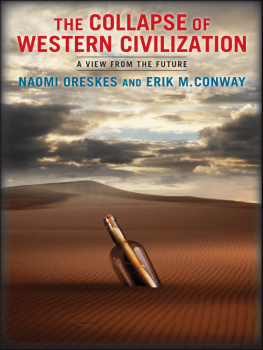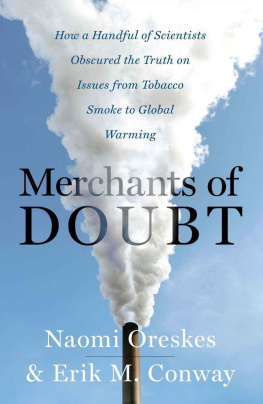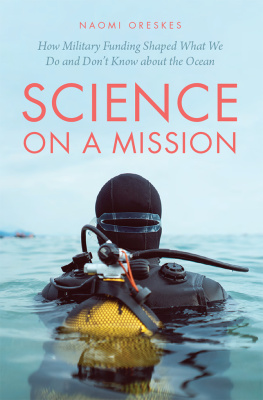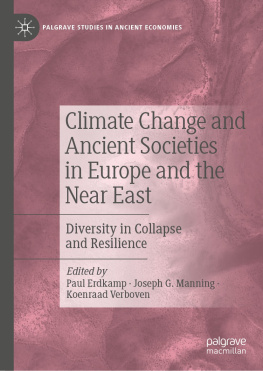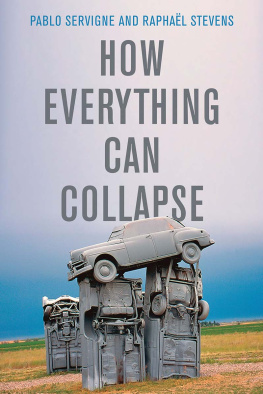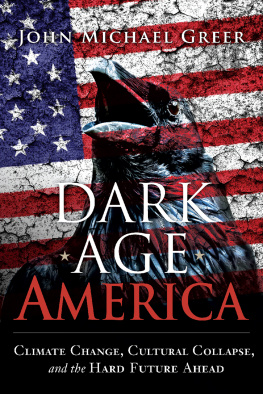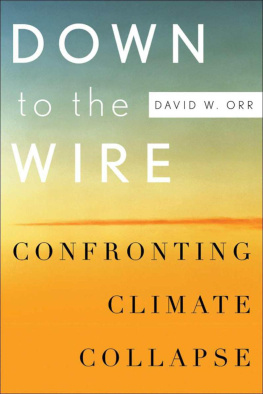THE COLLAPSE OF WESTERN CIVILIZATION
Choice manifests itself in society in small
increments and moment-to-moment
decisions as well as in loud
dramatic struggles.
Lewis Mumford,
Technics and Civilization (1934)
THE COLLAPSE OF WESTERN CIVILIZATION
A View from the Future
Naomi Oreskes and Erik M. Conway
COLUMBIA UNIVERSITY PRESS
NEW YORK
Columbia University Press
Publishers Since 1893
New York Chichester, West Sussex
cup.columbia.edu
Copyright 2014 Naomi Oreskes and Erik M. Conway
All rights reserved
E-ISBN 978-0-231-53795-7
Library of Congress Cataloging-in-Publication Data
Oreskes, Naomi.
The collapse of western civilization : a view from the future / Naomi Oreskes and Erik M. Conway.
pages cm
Includes bibliographical references.
ISBN 978-0-231-16954-7 (pbk. : alk. paper) ISBN 978-0-231-53795-7 (ebook)
1. Civilization, WesternForecasting. 2. Civilization, Western21st century. 3. Science and civilization. 4. ProgressForecasting. 5. Twenty-first centuryForecasts. I. Conway, Erik M., 1965 II. Title.
CB158.064 2014
909'.09821dc23
2013048899
A Columbia University Press E-book.
CUP would be pleased to hear about your reading experience with this e-book at .
COVER DESIGN: Milenda Nan Ok Lee
COVER ART: Colin Anderson Getty Images
References to websites (URLs) were accurate at the time of writing. Neither the authors nor Columbia University Press are responsible for URLs that may have expired or changed since the manuscript was prepared.
This book is based on the essay of the same name that was originally published in Daedalus (Winter 2013), the journal of The American Academy of Arts and Sciences. That essay has been slightly expanded and modified from its original publication, and the lexicon and interview are new to this book.
Contents
MAPS
We are grateful to Robert Fri, Stephen Ansolabehere, and the staff at the American Academy of Arts and Sciences for commissioning the original version of this work; to the Institute of Advanced Studies at the University of Western Australia where that version was first written; and to Patrick Fitzgerald, Roy Thomas, Milenda Lee, and the diligent and creative team at Columbia University Press for turning it into a book.
We also thank our agent, Ayesha Pande, without whom our work would be written but not necessarily read; Kim Stanley Robinson for inspiration; and the audience member at the Sydney Writers Festival who asked one of us: Will you write fiction next?
Science fiction writers construct an imaginary future; historians attempt to reconstruct the past. Ultimately, both are seeking to understand the present. In this essay, we blend the two genres to imagine a future historian looking back on a past that is our present and (possible) future. The occasion is the tercentenary of the end of Western culture (15402093); the dilemma being addressed is how wethe children of the Enlightenmentfailed to act on robust information about climate change and knowledge of the damaging events that were about to unfold. Our historian concludes that a second Dark Age had fallen on Western civilization, in which denial and self-deception, rooted in an ideological fixation on free markets, disabled the worlds powerful nations in the face of tragedy. Moreover, the scientists who best understood the problem were hamstrung by their own cultural practices, which demanded an excessively stringent standard for accepting claims of any kindeven those involving imminent threats. Here, our future historian, living in the Second Peoples Republic of China, recounts the events of the Period of the Penumbra (19882093) that led to the Great Collapse and Mass Migration (20732093).
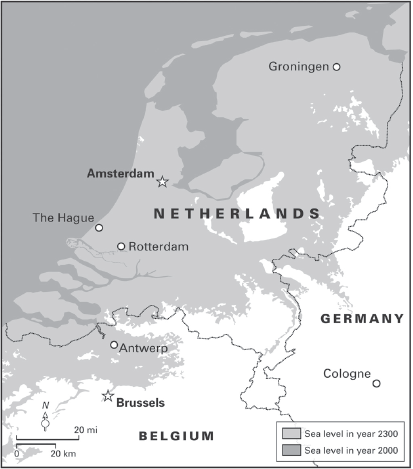
.
In the prehistory of civilization, many societies rose and fell, but few left as clear and extensive an account of what happened to them and why as the twenty-first-century nation-states that referred to themselves as Western civilization. Even today, two millennia after the collapse of the Roman and Mayan empires and one millennium after the end of the Byzantine and Inca empires, historians, archaeologists, and synthetic-failure paleoanalysts have been unable to agree on the primary causes of those societies loss of population, power, stability, and identity. The case of Western civilization is different because the consequences of its actions were not only predictable, but predicted. Moreover, this technologically transitional society left extensive records both in twentieth-century-style paper and in twenty-first-century electronic formats, permitting us to reconstruct what happened in extraordinarily clear detail. While analysts differ on the exact circumstances, virtually all agree that the people of Western civilization knew what was happening to them but were unable to stop it. Indeed, the most startling aspect of this story is just how much these people knew, and how unable they were to act upon what they knew. Knowledge did not translate into power.
For more than one hundred years before its fall, the Western world knew that carbon dioxide (CO2) and water vapor absorbed heat in the planetary atmosphere. A three-phase Industrial Revolution led to massive release of additional CO2, initially in the United Kingdom (17501850); then in Germany, the United States, the rest of Europe, and Japan (18501980); and finally in China, India, and Brazil (19802050). (Throughout this essay, I will use the nation-state terms of the era; for the reader not familiar with the political geography of Earth prior to the Great Collapse, the remains of the United Kingdom can be found in present-day Cambria; Germany in the Nordo-Scandinavian Union; and the United States and Canada in the United States of North America.) At the start of the final phase, in the mid-twentieth century, some physical scientistsnamed as such due to the archaic Western convention of studying the physical world in isolation from social systemsrecognized that the anthropogenic increment of CO2 could theoretically warm the planet. Few were concerned; total emissions were still quite low, and in any case, most scientists viewed the atmosphere as an essentially unlimited sink. Through the 1960s, it was often said that the solution to pollution is dilution.
Things began to change as planetary sinks approached saturation and dilution was shown to be insufficient. Some chemical agents had extremely powerful effects even at very low concentrations, such as organochlorine insecticides (most famously the pesticide dichlorodiphenyltrichloroethane, or DDT) and chlorinated fluorocarbons (CFCs). The former were shown in the 1960s to disrupt reproductive function in fish, birds, and mammals; scientists correctly predicted in the 1970s that the latter would deplete the stratospheric ozone layer. Other saturation effects occurred because of the huge volume of materials being released into the planetary environment. These materials included sulfates from coal combustion, as well as CO2 and methane (CH4) from a host of sources including fossil fuel combustion, concrete manufacture, deforestation, and then-prevalent agricultural techniques, such as growing rice in paddy fields and producing cattle as a primary protein source.
In the 1970s, scientists began to recognize that human activities were changing the physical and biological functions of the planet in consequential waysgiving rise to the Anthropocene Period of geological history.

